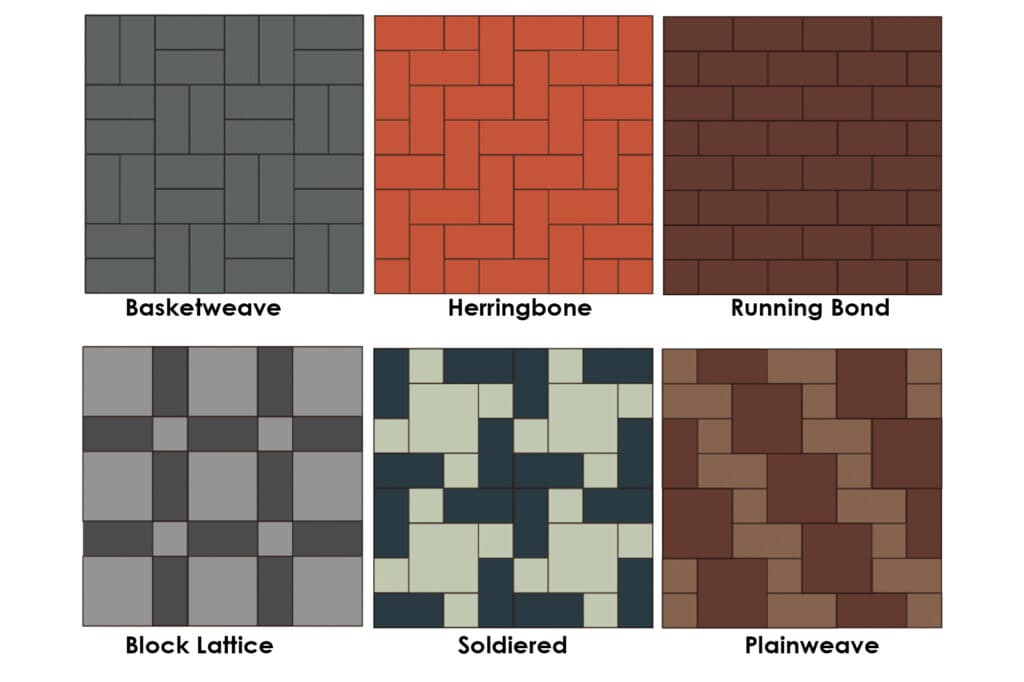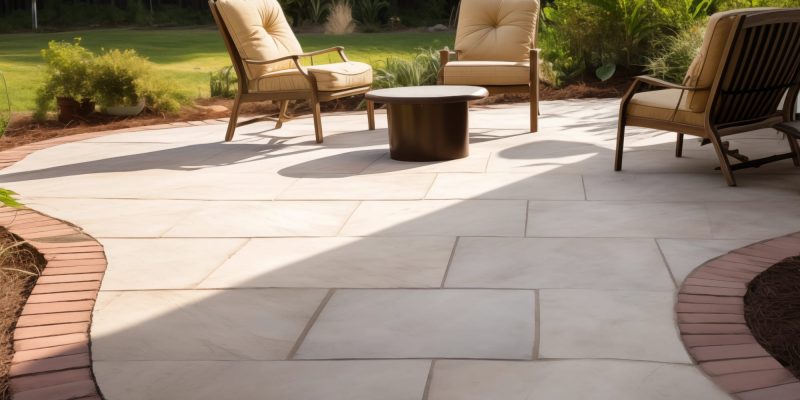As an experienced concrete contractor serving homes across Des Moines for over 10 years, I’ve seen patios transformed from basic slabs into creative works of art by cleverly integrating different hardscaping materials. While concrete alone provides an affordable, durable surface, layering in contrasting textures and colors from alternative paving materials like pavers brings an extra dimension of style.
The Best of Both Worlds: Concrete Strength Meets Paver Panache
What makes thoughtfully combining concrete and pavers so appealing? For starters, you get the practicality and strength of an underlying concrete foundation paired with the visual pop from different shapes, textures and hues. Concrete does the heavy lifting, providing fundamental structural integrity at a reasonable price point. Pavers then inject aesthetic flair through striking geometric configurations or randomly dispersed permeable sections that also encourage drainage. It’s a clever way to deliver surface functionality on a budget while still crafting a customized patio oozing artistic flair.
Beyond marrying form and function, this mixed material approach unlocks immense creative potential. Prospective designs are limited only by your imagination. Abstract waves of contrasting pavers can intersect smooth concrete, with pathways of stone stepping stones meandering in between. Inlaid bands of brick can border plant-filled spaces that provide a verdant contrast. Almost any renderings on your aspirational Pinterest boards can manifest into reality through thoughtful blending of concrete platforms with pavers.
Paver Styles and Materials for Making a Statement
When contemplating integrating pavers, start by considering which material best complements your vision. Here are some of the most popular options for infusing unique flair:
Brick: A classic choice bringing soothing warmth with a hit of texture. Score secondhand brick on the cheap from architectural salvage shops to amplify the vintage vibe.
Natural Stone: Indigenous stone like Midwestern bluestone nods to the surrounding landscape for a grounded feel. The irregular shapes scattered across concrete echo nature’s cacophonous beauty.
Ceramic or Porcelain: Cost-effective manufactured options providing consistent sizing for intricate designs. Vibrant solid colors or graphic prints enable seriously eye-catching designs.
Concrete Pavers: Like brick, these pragmatic rectangular forms offer budget-friendly building blocks for geometric designs. Permeable versions aid drainage issues.
Gravel/Pea Gravel: Simple loose material transcending formality. Smooth colorful stones brighten planting beds framed in pavers, or fill divide zones between concrete portions.
Playing with Layouts and Patterns

After settling on paver selections, experiment with different configurations. Classic basketweave brickwork often intersects bordering bands of irregular flagstone, resembling a Heritage Hill brick sidewalk. Concrete rectangles with Negative space gravel channels resemble a modern take on a Roman road. Herringbone angles juxtapose against the central concrete pad’s straight edges.
Sketch ideas to conceptualize proportions then map concepts to scale on grid paper. Simple pencil renderings directly inform the final layout peeled onto the prepared base. Limit intricate precision to achievable dimensions with rational symmetrical relationships. Trying executing too ambitious convoluted baroque designs often invites frustration. Start with elemental geometric forms – squares, circles, diagonal lines – that interplay agreeably with the principal concrete foundation.
And don’t forget the ornamental plantings! Frame concrete pads with gravel pathways leading to a bluestone-ringed planting bed. Allow creeping greenery to soften pavers’ hard edges for an integrated oasis effect. This luscious contrast amplifies the non-vegetative materials’ colors and textures further still.
Executing the Hardscape Project
Successfully executing such an ambitious undertaking requires understanding the construction methodology. After excavating and leveling the site, pouring the central concrete pad providing a robust infrastructure comes first. Allow 10-14 days curing time before installing pavers atop compacted aggregate layers. Unlike mortared installations, patio pavers typically sit sandwiched within beds of gravel and sand. This allows for subtle settling and alignment adjustments.
Lay pavers from the center outward and assess consistency. Avoid erratic unsightly gaps by maintaining even spacer distances, aligning contiguous edges in orderly grids. Filling gaps with fine sand finishes a professional polished appearance. Sweeping away debris before a final sealing completes the process. Expect the project to take 5-7 full workdays with possible revisions. But realize tantalizing visions by respecting best practices.
Long-Term Care for Your Dual Hardscape
Once installed, dual patios primarily demand proactive sealing and vigilant drainage considerations. As freeze/thaw cycles wreak havoc on Iowa winters, verify concrete cures properly and subsurface drainage accommodates snowmelt and storm surges. Any pooling moisture compromises integrity as patterns steadily settle and shift. Catch minor adjustments early before accelerated deterioration necessitates extensive repairs.
With mindful maintenance, thoughtfully layered pavers and concrete patios serve homeowners faithfully for decades as a refined backyard entertainment mecca. Call today to schedule consultations with seasoned experts ready to actualize your imaginative oasis visions through personalized combination patio designs specifically tailored for your unique dreams.

